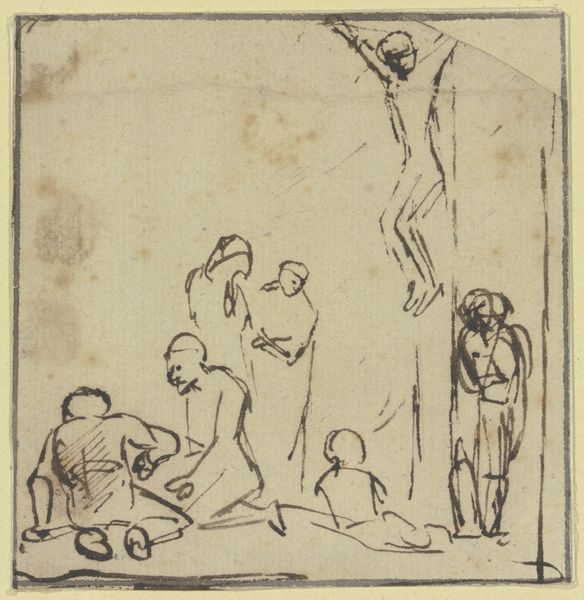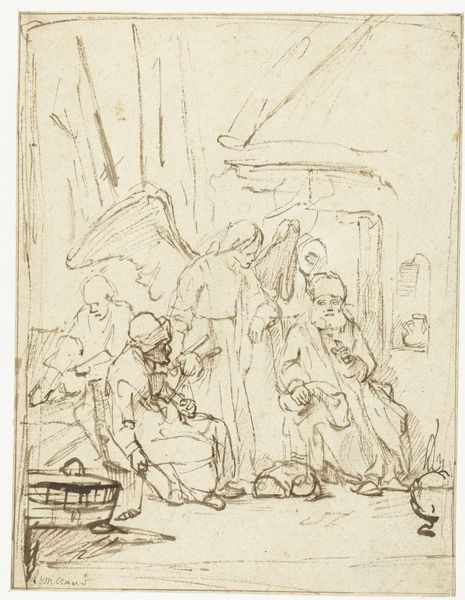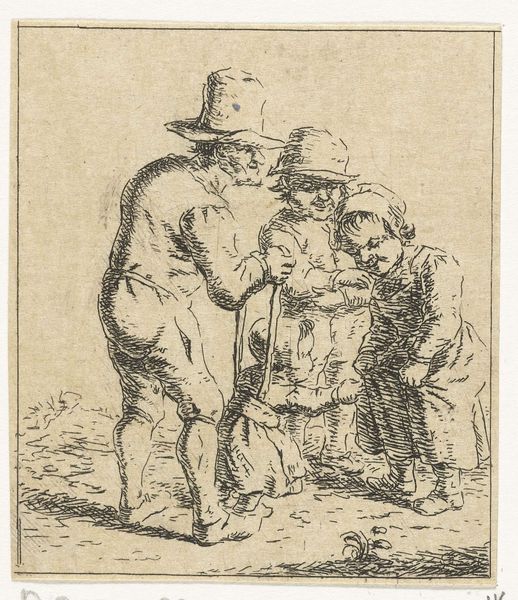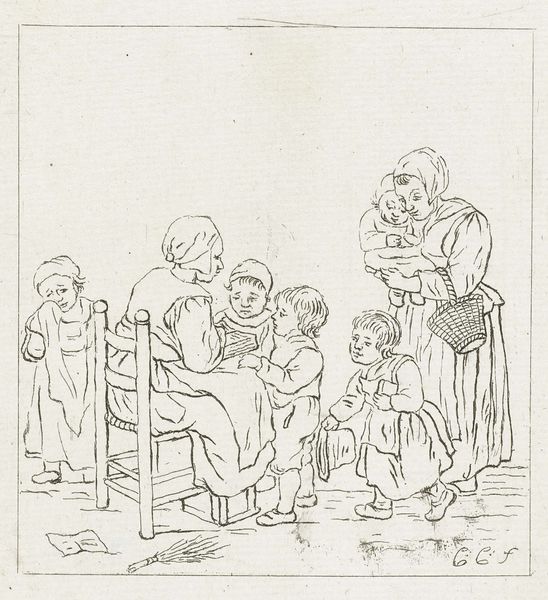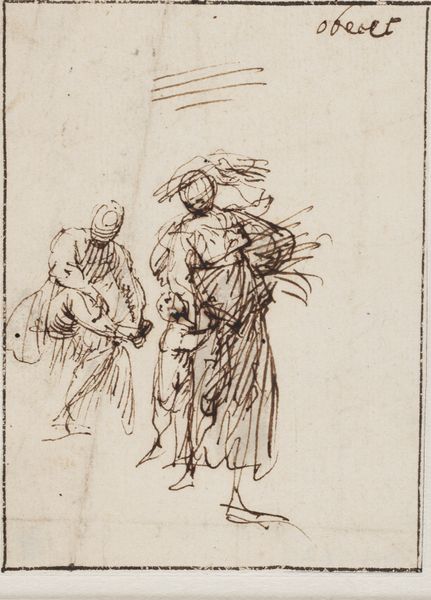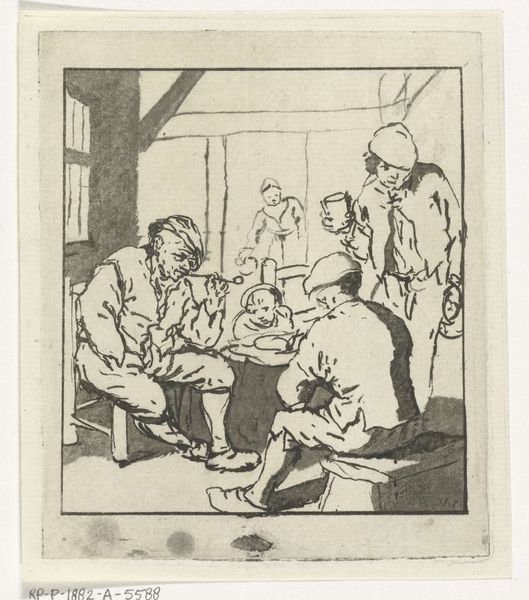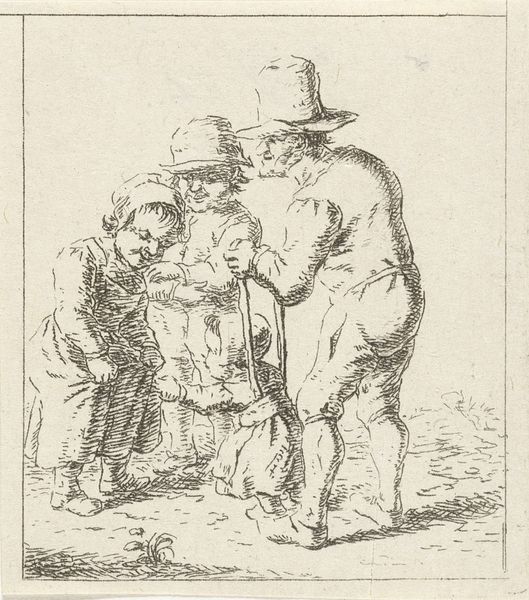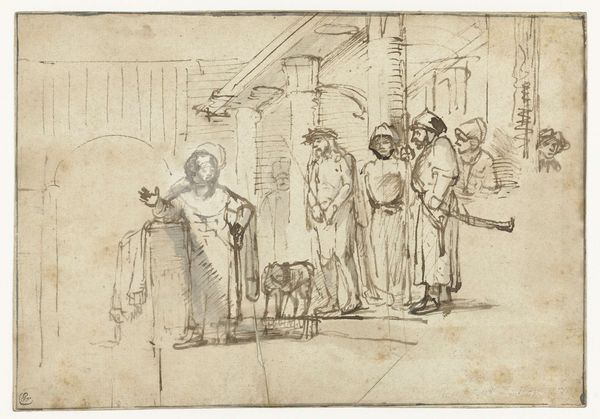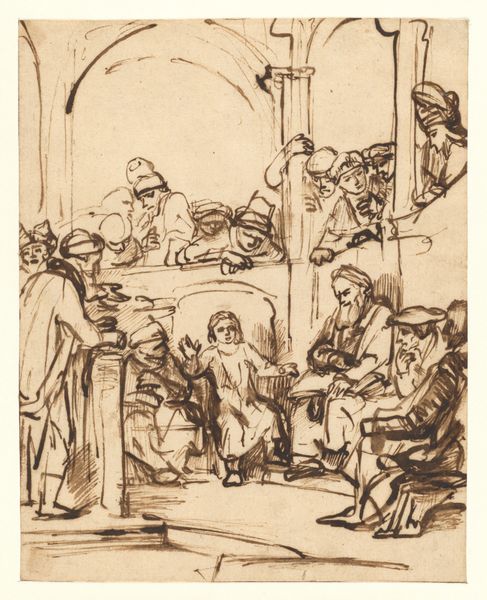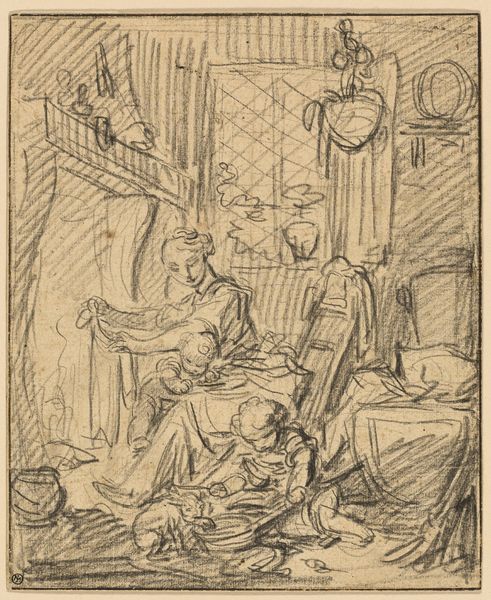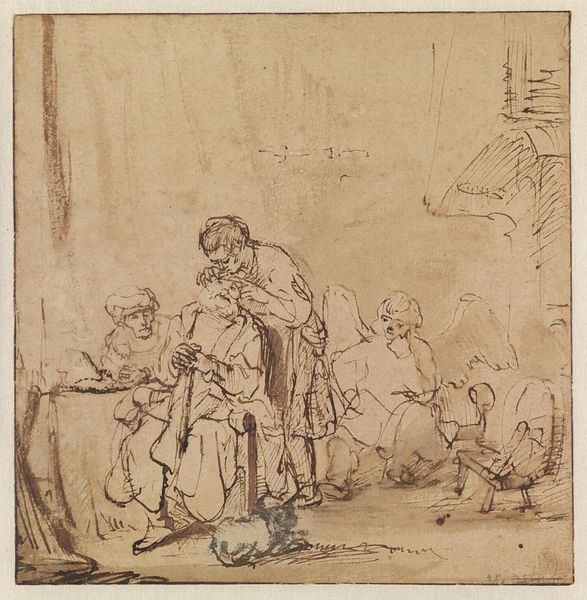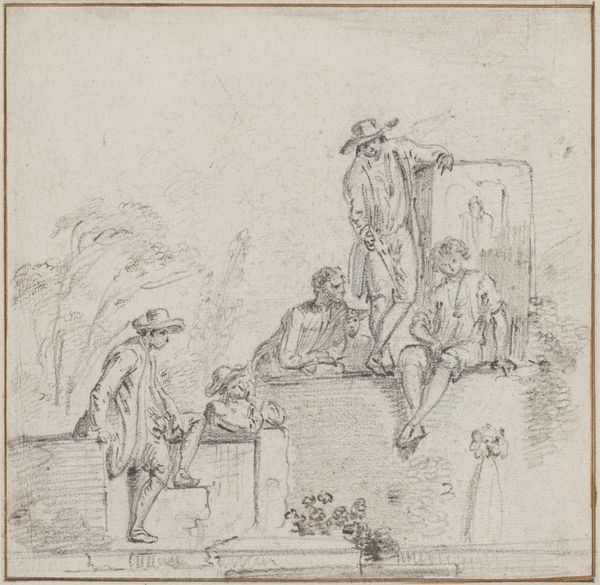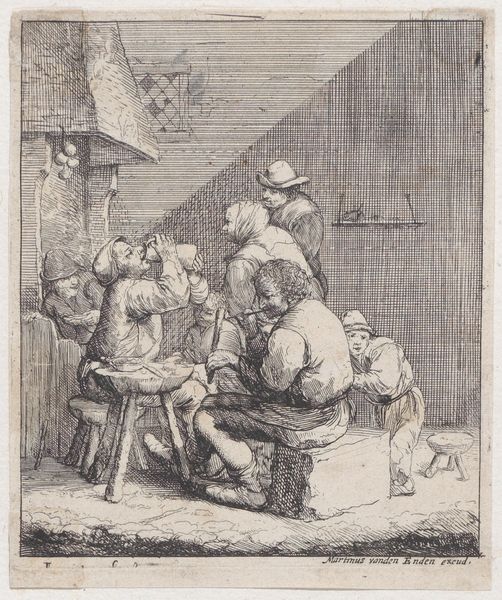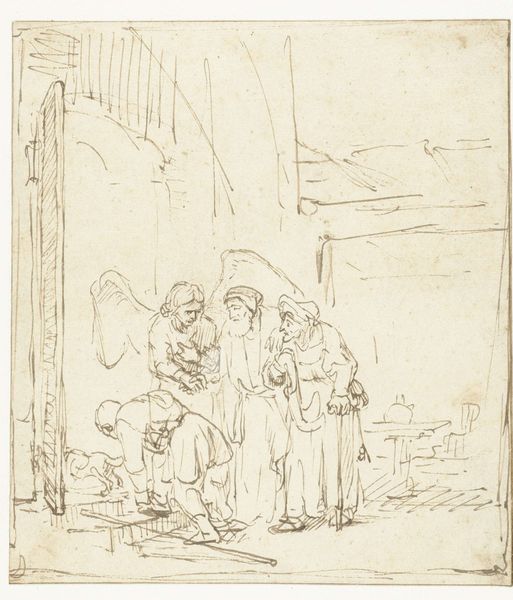
drawing, pen
#
portrait
#
drawing
#
pen sketch
#
line
#
pen
#
genre-painting
#
realism
Dimensions: height 128 mm, width 130 mm
Copyright: Rijks Museum: Open Domain
Curator: Here we have a pen drawing by Cornelis van Noorde, dating back to around 1780. It's called "Group of Figures Under a Window" and offers an intimate peek into everyday life of the period. Editor: My first thought is stillness and perhaps… resignation? The loose lines give it a sketched quality, raw and unfinished, like a fleeting glimpse of something melancholic. Curator: Precisely! Van Noorde's strength lies in capturing these genre scenes. Note the positioning – the figures under this nondescript window; each seems lost in thought, contained in their private spheres while occupying a shared space. It highlights societal structures and the public versus private life. Editor: The figure in the window! It feels like a painting within the painting, this face looking outward from the top right. What is it saying, silent sentinel that it is? Like a guardian of unspoken feelings in the group. Curator: That’s a keen observation! Figures peering from windows recur throughout Dutch Golden Age art. They become a compositional tool, definitely. More conceptually, they allow us to look at ways visual language builds on societal understanding and creates further layers of interpretation of domestic space, in a time of enormous social change in this part of the world. Editor: And that pen sketch style really nails the whole impression thing! The quickness of line work lends it a sort of 'slice of life' feel—nothing staged, all very in-the-moment and authentic. Also, the simplicity of the execution. Van Noorde wasn't trying to show off skills. It feels as intimate and unpolished as it could be. Curator: Absolutely. While he worked during a later era, it shows the lineage of the Dutch Golden Age, of showing daily life. There's an immediacy that captures realness within the structures and mores of late 18th-century Dutch society. The image itself serves to humanise an era. Editor: Looking again, there’s a gentleness, or sympathy even for his characters and their shared isolation. Not sentimental; very humane. I like the effect it leaves. Curator: And, reflecting on that, it's a valuable window for us into our past, showing how artists acted as recorders and social commentators. It invites conversation still about art's role in showing a version of history, as it unfolded.
Comments
No comments
Be the first to comment and join the conversation on the ultimate creative platform.
